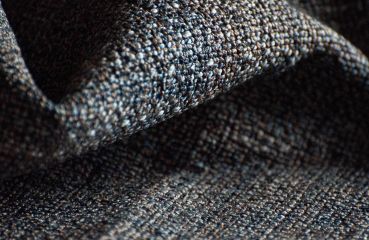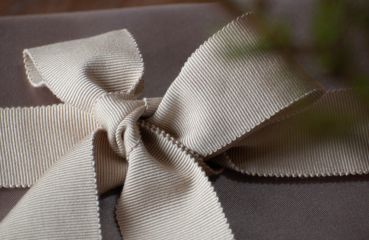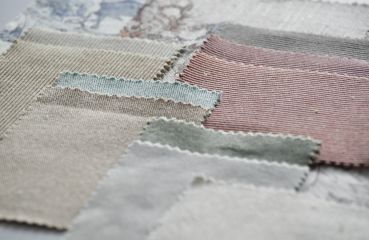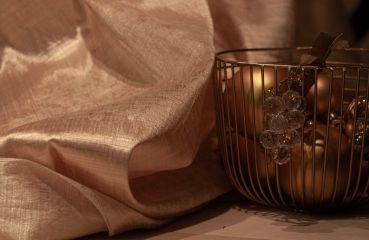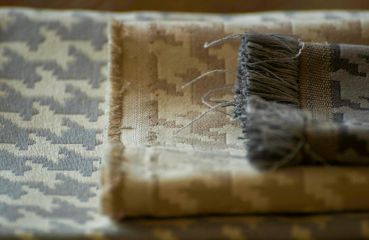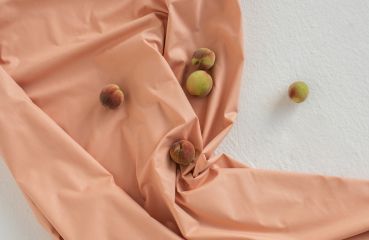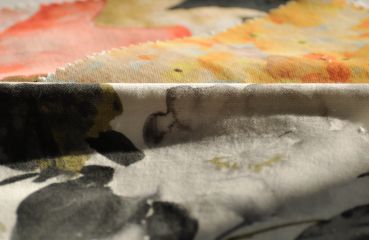ABOUT WOOLLEN FABRICS
Natural, thus healthy. A fabric with the best properties in the world.

WOOL
The highest quality wool comes from shearing living animals and is marked as “pure wool” on the tags and inserts. We all know the advertising slogan touting the exceptional properties of wool. “Pure new wool” is a declaration of naturalness and the highest quality. We often think of it as another marketing trick. After all, advertising slogans typically mean very little or cannot be trusted. In this case, these three short words convey a deeper meaning and tell the exact truth. It is worth taking a closer look at them to finally believe what they say and trust this fine, beneficial, friendly and beautiful fabric once and for all.
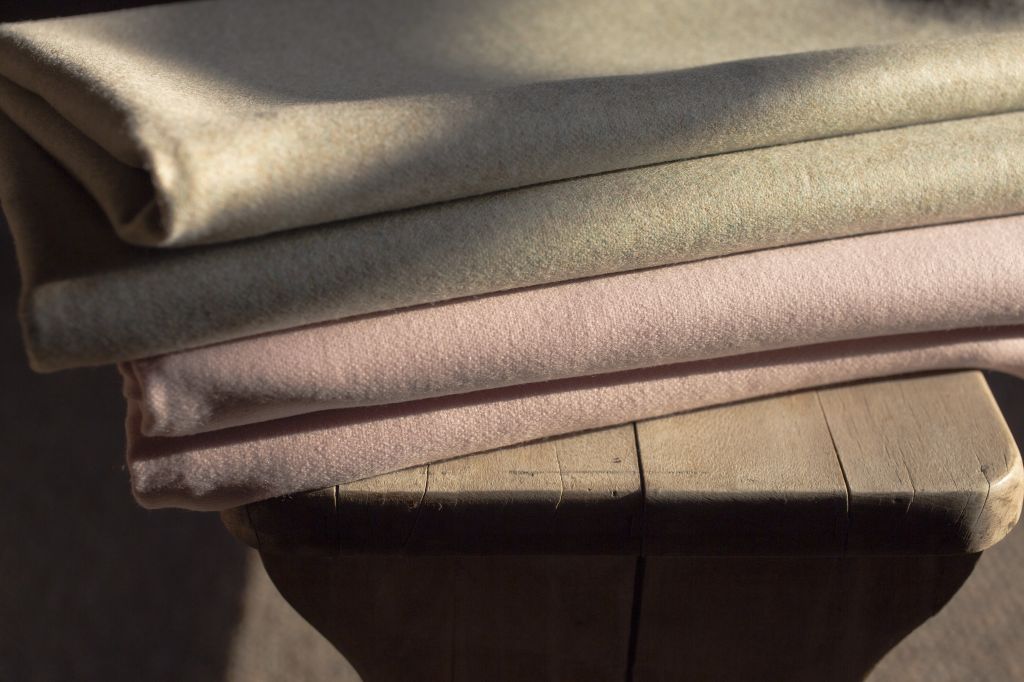
SAVOY FR
Wool is one of the oldest raw materials used by man. Being 100% natural, it still remains impossible to counterfeit in laboratory conditions despite decades-long efforts to do so. Since ancient times, people have known its health properties and treated toothache, broken limbs, inflammation, as well as rheumatic pains using wool compresses. Due to the high content of animal protein, medicinal wool (thoroughly tested for e.g. pesticide levels) inhibits inflammatory processes in the skin and accelerates wound healing. The antiseptic lanolin (called animal wax) contained in the sheep's fleece has numerous healing, antibacterial and protective properties. The therapeutic effect of wool involves its delicate contact with the skin. The capillary circulatory system is stimulated by countless fine wool fibres. Wool is not a medium for bacteria, which is of great importance in the case of open wounds; when applied to the wound, wool also ensures proper air circulation.
It perfectly warms up the body, which in turn leads to muscle relaxation, hence the touch of wool helps stabilize the nervous system and improves sleep. Fine wool fibres stimulate the endings of the nervous and circulatory systems, stimulating and enhancing blood circulation. As a result, wool gives us a feeling of constant yet controversial massage. This is because some people find it pleasant, while others claim it is itchy and impossible to bear (on average, the yarn thickness threshold of approx. 25 μm is considered pleasant for the skin. The finer the fibre, the more expensive, softer and silkier the wool).

SAVOY FR
Undoubtedly, though, the rough touch of wool improves blood circulation in our cells and brain, which has a positive effect on memory and concentration. In addition, by eliminating positive ions, wool removes electrostatic charges from our cells and by replacing them with negative ions appropriate for the human body protects us from the negative effect of the electromagnetic field, the so-called electrosmog, emitted by modern devices and computers. So, it is worth having wool at home with a Wi-Fi network. The contact with wool makes us feel rested, resilient to excessive excitability, more immune, and less hyperactive.
As if that were not enough, wool is the best natural thermal insulation product. Thanks to the dynamics of the fibres, which have the ability to shrink and expand under the influence of temperature, wool has the ability to self-regulate. As a result, it protects against freezing in cold weather, and against overheating in hot temperatures. Moreover, being naturally elastic, wool does not adhere directly to the body but traps air between the skin and clothing. This creates an additional insulation layer, so that the woollen fabric or knitwear "breathes" and maintains a body temperature of around 37 degrees Celsius.
Additionally, thanks to the highest hygroscopicity among all fibres, wool wicks moisture away from the skin. It does not absorb sweat but instead releases it from its outer surface. Wool can absorb moisture up to 50% (under normal conditions, the fibre is 17% moist). This is a great advantage from a hygienic point of view.
Another interesting asset of wool is its natural fire resistance resulting from the high content of nitrogen and water. When on fire, wool does not melt but drips. Also, it soaks with water relatively slowly, which is why woollen textiles (Savoy FR in the Dekoma collection) are recommended and are often used as a material for furnishing public buildings, and heat-resistant blankets made of wool are specified for use by firefighters to extinguish fire.


WOOL
Wool is mostly criticized for causing allergic reactions. Some sources report that it is one of the strongest allergens which can irritate skin and cause symptoms, regardless of whether it is of high quality or not. Others strongly deny this claim. The truth, as always, lies somewhere in between. A genuine wool allergy is rare and it is in fact a reaction to the substance contained in lanolin found in sheep's wool. Skin irritation caused by contact with wool is much more common than wool allergy, but it is not a typical allergic reaction in the medical sense. On the contrary – almost anyone can use woollen products because wool has hypoallergenic properties and acts as a sort of biofilter blocking the development of mites.
Wool does not absorb odours or dust, and effectively neutralizes harmful substances in the air, such as poisonous formaldehyde, in closed spaces. It also protects against radioactivity in building materials (hence it is used in the construction sector for heat and sound insulation). Wool is extremely resistant and as such it does not absorb external, undesirable odours, especially the smell of nicotine.
To conclude this high praise, wool is definitely something to love and have at home. It is worth having fittings and accessories featuring natural wool - upholstered furniture, bedspreads, pillows, blankets and rugs. In addition to aesthetic values, they offer multiple health benefits.

WALT
Owing to wool fibres’ elasticity, woollen fabrics do not wrinkle easily. Compared to cotton, wool is undeniably less likely to get soiled and although it is not stain resistant, it has natural self-cleaning effect stemming from its antistatic properties.
But to call things by their right name, wool stretches, especially when wet. Ultimately, however, it is elastic and able to return to the initial state. Proper care of woollen products prevents them from stretching permanently. When handled improperly, wool can also become susceptible to felting, i.e. it compacts and hardens. Sometimes it is a defect, sometimes an extremely desirable feature. After all, felted wool is nothing more than highly valued and widely used felt. Sometimes, it has an extremely decorative and desirable effect and thus is used on a large commercial scale in the form of felt.

WALT
Since wool is resistant to dirt and does not attract dust mites, it can be washed less frequently compared to other materials. The best way to refresh your woollen fabrics is to shake and air them thoroughly. The safest method of washing woollen products is dry cleaning without soaking. It is not recommended to wash woollen products in the washing machine (even in the hand wash or wool cycle).
This otherwise excellent fabric also has a bothersome tendency to pill. This is a common and natural process, which after all does not last forever and even after a period of intensive pilling, good-quality wool returns to “normality” – it is definitely worth the wait!
Meanwhile, woollen fabrics with an anti-pilling finish have started appearing on the market, which makes the experience of using these materials much more pleasant.
Wool requires care and attention precisely because it has the characteristics of living organisms (it is “pure, natural”). So, let us give wool some loving, and it will reward us with invaluable benefits.

WOOL
Not only Woolmark. Be a responsible and aware user.
.jpeg)
A selection of woollen fabrics from Dekoma / Long Beach 2019
Woolmark is one of the most recognizable and valued trademarks in the world. It assures that the branded product is made of good quality, pure and natural wool. Everyone knows its characteristic logo depicting a wool skein. Woolmark is a certificate with a long tradition, its history dates back to the 1930s.
It was then that a handful of global wool producers decided that it was in their best interest to promote wool internationally. Woolgrowers decided to impose a 6 pence levy for each bale produced and allocate the collected funds for research and promotion. As a result, the International Wool Publicity and Research Secretariat was formed in 1937, which was quickly renamed the International Wool Secretariat (IWS). It was founded by sheep breeders from Australia, New Zealand and South Africa. A dozen or so years later, the IWS Award was created as an indicator of perfection and innovation in fashion, promoting wool in its purest form. It was the first incarnation of the International Woolmark Prize. During World War II, when a new competitor of wool - synthetic fibres, such as nylon, polyester and acrylic appeared on the market, the general manager of IWS, developed the concept of a unique label that would guarantee the content of wool fibres in textile products.
And so, the Woolmark logo, designed by an Italian artist and graphic designer Francesco Saroglia, was launched in 1964 and since then has become a brand of high-quality woollen products. For over 50 years of its existence, the logo has appeared on over 5 billion items of clothing. The quality of products with the Woolmark logo is thoroughly verified by the Australian Wool Innovation. This institution has been working for decades to promote wool around the world and sets the quality standards for woollen products and wool blends.

Manufacturers of woollen apparel can apply for three basic categories of trademarks. Products made from 100% Pure New Wool receive the WOOLMARK brand, those made from a wool blend containing minimum 50% of New Wool – WOOLMARK BLEND, and those made from a wool blend containing minimum 30% and maximum 50% of New Wool – WOOL BLEND.
However, being familiar with the Woolmark trademark is not enough to safeguard oneself against buying woollen fabrics of poor reputation.
The production of woollen fabrics carries the risk of various abuses, which stem from the high demand for wool and high costs of animal husbandry matched with the desire to yield the greatest profits. Hence the dark side of wool production, which requires from us, as consumers and users, great vigilance, attention and, most importantly, awareness.
Sheep breeders compete who will produce the finest wool. There are even awards for a bale of the finest wool in the world. While this type of award has more to do with marketing, the fact is that finer wool gets higher prices on the market. This leads to the development of sheep farming in large enclosures where the sheep live in individual pens and never go outside. It is estimated that currently 1% of sheep are bred in this way, but ecological organizations are fighting for a total ban on this type of livestock farming.
The same concerns apply to obtaining animal fleece. While shearing is not a painful procedure, there are reports of inhumane treatment of animals during the process. All such practices are condemned by the public opinion, and even punished and boycotted by the business. However, you should be aware of them and use wool only from those suppliers who offer raw material from fair trade breeders.
The production of organic wool, unlike the conventional one, is carried out under strict organic farming rules and comes from sheep grazing on natural pastures. This wool is mainly produced in New Zealand, Australia, the USA, Canada and Great Britain.
Pesticides, herbicides and artificial fertilizers are not used on pastures where sheep are grazed. Also, these animals are not administered excessive amounts of antibiotics, as is often the case with conventional wool production.
Regardless of the method of production (fully organic or not), we should be ready to pay the right price for wool, without obsessing about buying whatever as cheaply as possible. Good quality wool produced according to fair trade rules cannot be cheap. Try to get it from good, reliable suppliers who offer both luxury and pure varieties, but also – at the right price – good quality, valuable blends.
Woollen fabrics from the Dekoma collection featured in this article:
Noble, finely woven woollen upholstery fabric (25% polyamide and polyester blend) which can also be used for decorative purposes. It has good technical parameters – it is naturally flame retardant and passes the match and cigarette test in accordance with the British ignitability standards. It comes in a palette of over forty beautiful shades, including earth tones (soil, grass, stone), subdued beiges, browns, creams and greys, as well as vivid, expressive and strong colours unusual for wool such as: fuchsia, plum, aubergine and emerald green.
It's a woollen decorative and upholstery fabric (20% polyamide blend) available in an extensive range of 163 shades, including monochromatic and melange products. Savoy FR has an elegant, natural look. It is recommended for curtains in private, cosy interiors as well as public spaces. It has a flame retardancy certificate (including Crib 5) and is suitable for use on ships (IMO-certified).
It's the highest quality woollen felt with high basis weight and low, 1% shrinkage. Its good parameters make it ideal for use in public buildings. Walt boasts a fashionable, trendy set of colours, from monochromatic, highly saturated hues to melange and pastel shades. An interesting proposition for designers to be used for creative solutions in unique interiors and facilities. Walt's natural flame retardancy makes it perfect for public spaces.
The photo-session was commissioned by DEKOMA in New York, September 2019.
Creative idea and styling: MBBM Studio
Photos: Boris Miller







